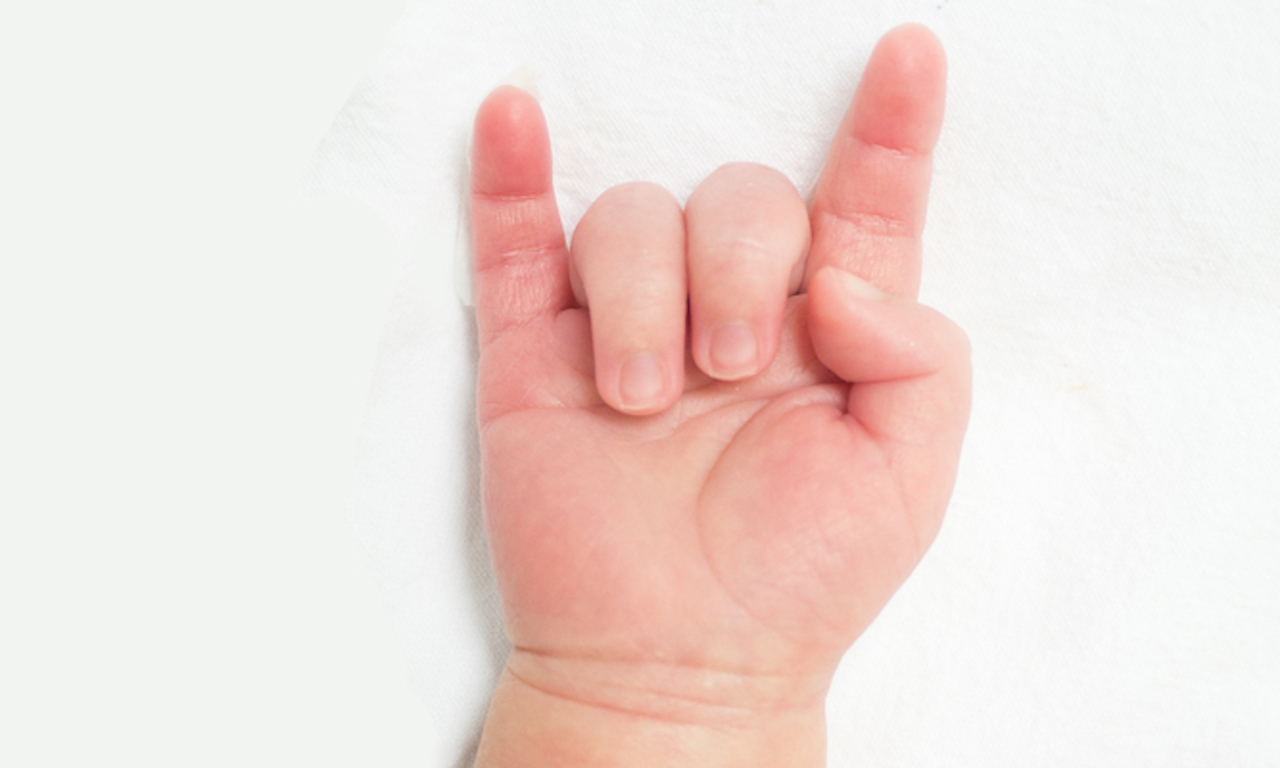Wouldn’t life be so much simpler if your baby could just tell you what was wrong? Hearing your baby cry and not knowing why can be distressing. Most often, it can leave you feeling completely helpless. Figuring out what your baby wants, often comes down to a process of elimination: Is their nappy full, is it nap time, are they too hot, or could they be hungry?
Well, now you can learn to communicate with your baby.
Replacing crying with communication
Sign language has been used for years to assist those with hearing difficulties to communicate. In the late 1980’s, a doctor who also happened to be a sign language interpreter, noticed that the children of his deaf friends were communicating with their parents at 6 months old using sign language. These same children, by the age of 9 months had many different words they could sign. Most importantly, he also realised that these children were less demanding, as their needs were met much faster.
Can babies really sign?
A baby’s understanding of language and movement develop much faster than their ability to speak, so that’s why sign language makes so much sense. What’s more, a baby finds it easy to copy signs and signals. In other words, your baby will be waving long before they can say “good bye!” Teaching your baby to sign, could give them the “edge”, and make your job as a parent much easier between ages 8 months and 2 years, when children begin to know what they want, need and feel but don’t necessarily have the words yet to express themselves.
How to get started
Teaching your baby sign language takes a bit of patience, so just keep these things in mind:
- Most babies won’t be able to sign until they’re 8 months old, but you can start teaching them signs as early as 6 months
- Get to know a few basic signs that you would use the most often: nappy, drink, more, done, hot, cold, mommy and daddy (see examples below)
- Practise these signs often with your baby at the same time as saying the word. Signing shouldn’t replace language for you or your baby!
- Make sure your partner and your baby’s caregivers also know the signs and practise them with your baby too
- Use this as a special bonding time with your child. Try holding your baby on your lap, with his or her back to your stomach. Hold your baby’s hands and arms and show them how to make signs
- Be patient. Don’t be discouraged if your baby doesn’t start using signs right away! The goal is to make things easier for both you and them, not the opposite!
Some signs for you to try
- “food” – put your finger tips to your lips
- “all gone” – move your hand, palm up, backward and forward
- “scared” – tap your chest again and again
- “hot” – put out your hand and withdraw it quickly
- “where?” – shrug your shoulders, with your palms held out
- “rabbit” – wrinkle up your nose or hold up two fingers
- “car” – steer an imaginary wheel
- “book” – hold hands flat with palms up
References
https://www.babycenter.com/0_signing-with-your-baby-or-toddler-how-to-communicate-with-yo_1449533.bc?showAll=true
https://www.babysignlanguage.com/basics/history/#garcia
https://www.webmd.com/parenting/baby/baby-sign-language-does-it-work
https://www.mayoclinic.org/healthy-lifestyle/infant-and-toddler-health/expert-answers/baby-sign-language/faq-20057980

